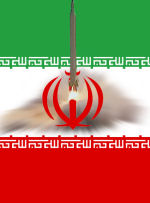 The U.S. Attorney for Utah recently announced that it had filed a Felony Information against Abraham Trujillo and David Waye for attempted export of F-14 and F-4 fighter aircraft parts without a license. According to the press release, Immigration and Customs Enforcement (“ICE”) agents discovered a website run by Trujillo and his business NSN Specialists which listed F-14 and F-4 parts for sale. The ICE agents set up a sting operation and over the next several months the two men, according to the allegations of the Felony Information, attempted to export the parts to Canada without the required export license. Exports of F-14 parts are particularly significant because only Iran is currently flying F-14 aircraft.
The U.S. Attorney for Utah recently announced that it had filed a Felony Information against Abraham Trujillo and David Waye for attempted export of F-14 and F-4 fighter aircraft parts without a license. According to the press release, Immigration and Customs Enforcement (“ICE”) agents discovered a website run by Trujillo and his business NSN Specialists which listed F-14 and F-4 parts for sale. The ICE agents set up a sting operation and over the next several months the two men, according to the allegations of the Felony Information, attempted to export the parts to Canada without the required export license. Exports of F-14 parts are particularly significant because only Iran is currently flying F-14 aircraft.
The Felony Information contains additional details which, if true, are certainly damning. Count 2 of the Felony Information involves the attempted export of F-14 wiring harnesses and impeller assemblies valued at $39,675. Allegedly the defendants told the undercover ICE agents that the items looked “very military” and that they were therefore repackaging them and assigning them commercial part numbers. Further, the defendants prepared an invoice valuing the items at $600.
Count 3 involves attempted exports of F-4 impeller assemblies which the defendants told the undercover agents were in “very obvious military packaging.” Accordingly, one of the defendants said, “I’m going to have to convert it to commercial.” In order to do that, the defendants allegedly repackaged the goods and prepared an invoice describing the goods as “gear sprockets.”
If those allegations can be proven, somebody is going to jail.

 Posted by
Posted by  Category:
Category: 

 Last week, an email news list maintained for the Department of Homeland Security by Computer Sciences Corporation (“CSC”)
Last week, an email news list maintained for the Department of Homeland Security by Computer Sciences Corporation (“CSC”)  Three of the 167 counts charged against Armor Holdings which led to the recent $1,102,200
Three of the 167 counts charged against Armor Holdings which led to the recent $1,102,200  Because it is another slow day in the export law world, I thought I’d use the opportunity of today’s post to note that on Tuesday Export Law Blog was one year old. Since our initial post, there have been 207 additional posts and 582 separate comments on those posts.
Because it is another slow day in the export law world, I thought I’d use the opportunity of today’s post to note that on Tuesday Export Law Blog was one year old. Since our initial post, there have been 207 additional posts and 582 separate comments on those posts.

